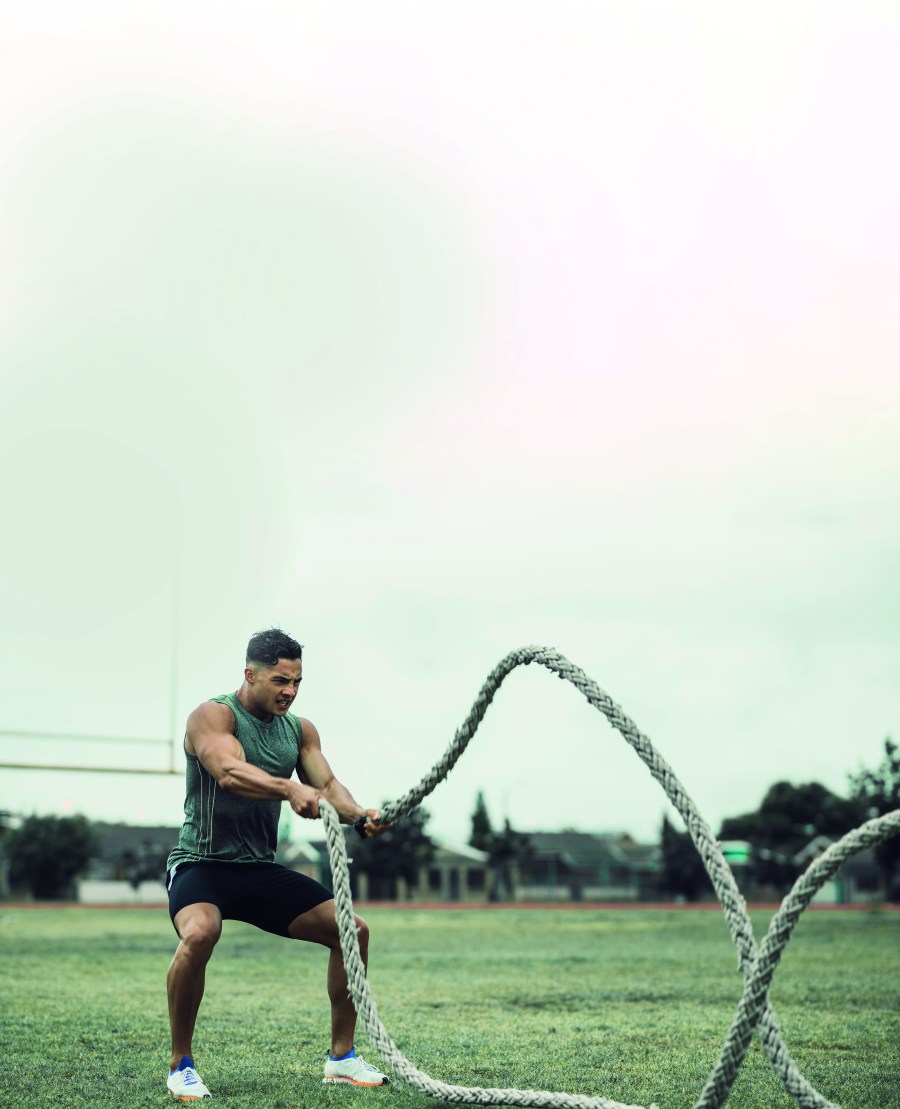- Stretch wisely
Static stretching can shock cold muscles, risking injury and depleting muscle strength by up to 30%. Instead, limber up with light cardio and some dynamic mobility moves to raise your heart rate and flush your muscles with oxygen. Save static poses for your cool-down.
- Turn up the music
Studies show some gym-goers who listen to music put in up to 10% more effort without realising it. For the best results, choose tracks with a beat that matches the pace of your workout. Optimal exercise music is between 135 and 190 beats per minute.
- Check your posture
It sounds simple, but many people don’t give posture a thought when they work out. Perfect posture – in general: shoulders open and relaxed, spine straight and core muscles engaged – ensures you target the right muscles and work to your capacity. It’s also essential for preventing injury, particularly lower back strain.
Before any dynamic movement, remember the posture drill: move your shoulder blades out and down to broaden your upper body and tighten the muscles around your midriff. Never hold your breath during a lifting exercise – breathe in deeply as you prepare for the move and breathe out through pursed lips as you lift.
- Do more in less time
Make every minute of your workout count. Research shows that people who spend a long time in the gym often clock up ‘dead miles’. Thirty minutes of exercise working at 80% of capacity is as good as an hour at 60%.
A study published in The Journal of Applied Physiology found people who reduced the length of their workouts by 25% could still improve their fitness, provided they boosted the intensity.
- Keep your body guessing
You won’t get fitter or stronger by doing the same thing day in, day out. Aside from being dull, your body gets used to the routine and stops developing new muscle.
To make progress, change your workout every few weeks. Increase the weight of your dumbbells, perform more reps, or make subtle changes to your exercises.






